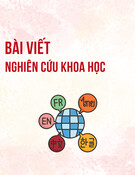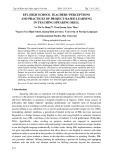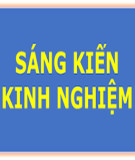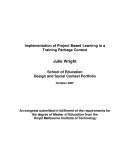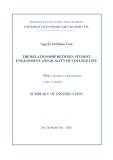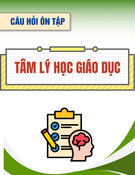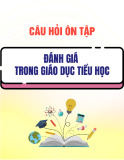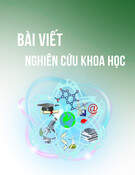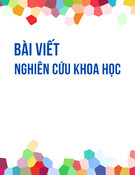
TẠP CHÍ KHOA HỌC - ĐẠI HỌC ĐỒNG NAI, SỐ 34 - 2025 ISSN 2354-1482
22
PROJECT-BASED LEARNING: A HISTORICAL REVIEW OF
ITS THEORETICAL FOUNDATIONS AND DEVELOPMENT
IN THE HIGHER EDUCATION CONTEXT
Le Tien
Dong Nai University
Email: letienqt@gmail.com
(Received: 9/12/2024, Revised: 5/1/2025, Accepted for publication: 23/1/2025)
ABSTRACT
This review paper provides an overview of Project-Based Learning (PBL) in the
context of higher education. It presents the theoretical foundations and development
of PBL from its origins to its contemporary applications. Through a historical review
of relevant theories, the paper examines the underlying theoretical foundations that
have influenced PBL, such as constructivism and experiential learning theories. The
paper also discusses the development of PBL in higher education systems, examining
its integration into curricula across disciplines, the challenges faced in its
implementation, and its impact on student engagement and outcomes; thereby
identifying future directions for PBL application in higher education, emphasizing
technological advances, interdisciplinary collaboration, and the need for ongoing
research to evaluate its effectiveness in comprehensive educational contexts.
Keywords: Project-based learning, theoretical frameworks, constructivism,
student engagement, challenges
1. Introduction
The project method is one of the
teaching strategies used by instructors.
Kilpatrick created this approach in 1918,
which strongly emphasizes experiential
education, or hands-on learning, as
Dewey (1938) recommended. Education
reformers, an activity that can be
categorized as a project if it satisfies the
self-determination and self-satisfying
need criteria, were developed as a result
of Dewey's (1938) recommendation.
Thus, project-based learning methods
that provide students with practical
experience are among the subfields of
experiential learning.Through projects,
PBL is thought to assist students in
gaining social and language proficiency,
in contrast to other conventional
teaching approaches.
Project-Based Learning serves
several important educational purposes.
It enhances student engagement and
motivation, promotes critical thinking
and problem-solving skills, fosters
collaboration and communication,
develops real-world and transferable
skills, encourages independent learning,
and improves retention and
understanding of academic content.
Through its focus on active, student-
centered learning, PBL prepares students
for academic and professional success in
the 21st century. The primary purpose of
PBL is to engage students actively in the
learning process. By working on real-
world projects, students are provided
with a context that makes learning more
relevant and interesting. Research
suggests that PBL leads to higher levels
of intrinsic motivation because students







